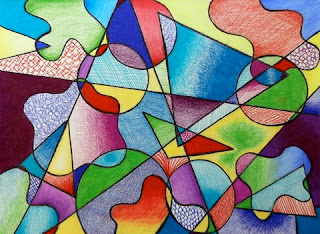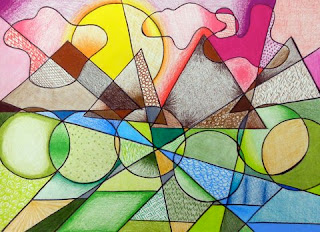I'm trying a new approach to Abstract art in my Drawing 1 classes. I came up with a more structured way of having the students complete their Abstract designs because the way I've done it in the past was so open-ended that a lot of kids really struggled and constantly second-guessed themselves. Here are the two examples I came up with:
 |
| Non-representational |
 |
| Abstract landscape |




Very nice, so how did you decide to structure it? I remember that was a hard concept to teach - the idea that your art doesn't actually have to look like anything... You get a lot of "My little sister could do that!" comments...
ReplyDeleteI'm doing the PowerPoint/ discussion as usual and then having them create their abstract composition by drawing 20-30 shapes and 10-15 lines through the shapes. They can either be totally random like the top example or go for something more representational like the bottom example. Then I'm putting a lot of focus on a series of colored pencil techniques that are also represented in the examples. We'll see how it goes.
DeleteInteresting.... I think teaching the techniques would make a big quality difference.
ReplyDelete